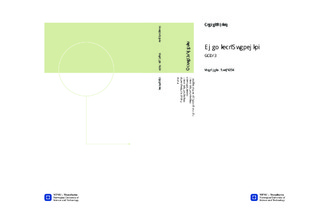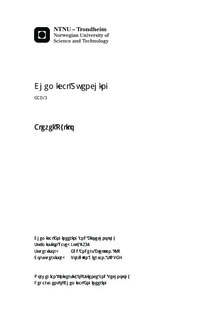| dc.description.abstract | The main objective of the present work was to investigate the opportunity for the use of light hydrocarbons as quenching agents to quench high temperature gas streams. When light hydrocarbon, for example propane, is introduced into a hot gas, for example synthesis gas, the cooling of hot gas will occur both by dilution and by endothermic reactions of hydrocarbon. Thus, the hot gas may be quenched to a lower temperature. At the same time, thermal energy present in the hot gas may be recovered in the form of desired products that are produced during hydrocarbon cracking. This type of quenching is called for chemical quenching. A proof-of-concept study would be performed, but was not completed because of problems with a realization of experimental conditions and problems with equipment. Methane pyrolysis experiments were performed at high temperatures 1400 and 1450 °C. Short residence times and high dilution with hydrogen were applied in order to minimize coke formation. Methane conversions, selectivities and yields of products for different experimental conditions were calculated from the gas chromatographic analysis. The aim of pyrolysis experiments was to validate that the experimental set-up Pyrolyserigg works properly. This was done by comparison of experimental results with results that were obtained before on the same set-up and by comparison with a literature data. After the work of Pyrolyserigg was verified, it was possible to modify existing cooling/quenching system. A new quencher part that gives opportunity to introduce a cold gas into hot gas, heated by high temperature furnace, was designed. The quencher part was designed in a way that the temperature of hot gas entering the quencher and temperature of cooled gas mixture leaving the quencher could be measured. Thus, quenching effect (temperature drop) could be measured. Three types of experiments were performed after modification of cooling system: experiments with only hot inert gas (N2), experiments with a hot nitrogen gas «quenched» by methane, and hot nitrogen gas quenched by propane. Hot gas temperature and gas flows were varying in order to study the modified system's behaviour. Experiments with a hot nitrogen showed that there is a limit for maximum obtainable temperature inside the quencher, 1195 – 795 °C, for the given quencher design. A high temperature gradients between measurements points were registered that may be an indication of high heat losses. The temperature gradient increases with increasing gas temperature and decreases with increasing gas flow. Quenching effect (temperature drop) was measured in quenching experiments with propane, and expected temperature drop was calculated for the applied experimental conditions. Low measured temperature drop in quenching experiments indicates poor mixing of hot and cold gases. Quenching effect of propane introduction increases with increasing hot gas temperature because heat consumption by endothermic reactions increases, that is a consequence of increasing propane conversion. A product mixture from quenching experiments with propane was analysed, and conversion of propane, yield and selectivities to products were calculated. Ethylene and propylene are considered to be most valuable products. Ethylene yield increases with conversion and is around 37 % at 100 % conversion. Propylene yield goes through a maximum at 55 % conversion and approaches zero at 100 % conversion. The main identified problems for the proof of concept study are a poor gas mixing, high temperature gradients through the quencher and high heat loss from the quencher part. In addition, problems with connection ceram tube – quencher at high temperature have occurred. | nb_NO |

